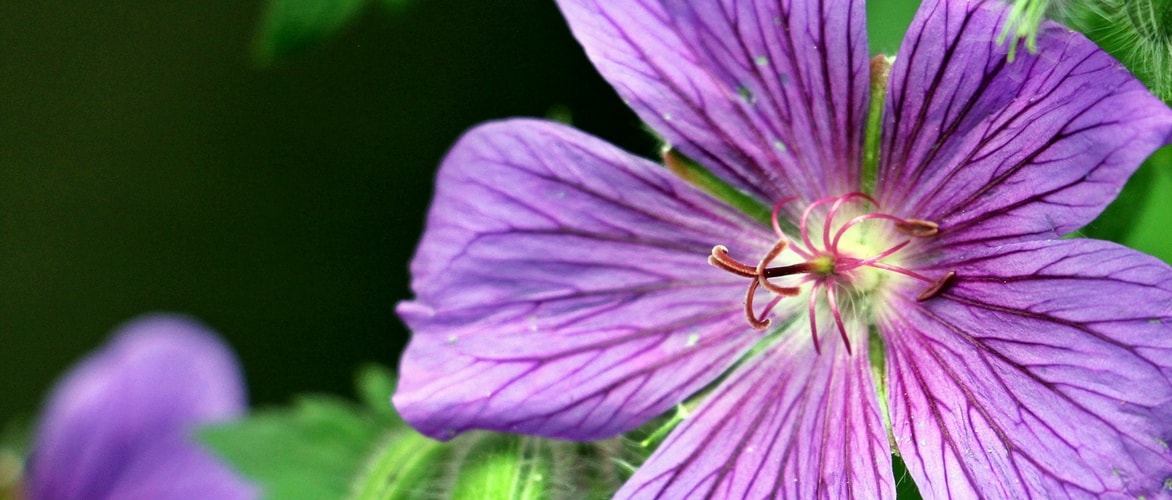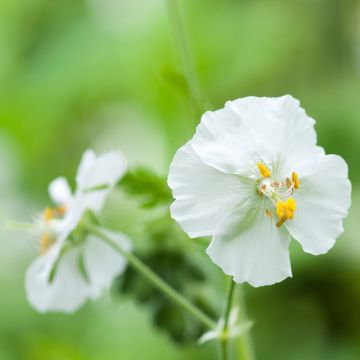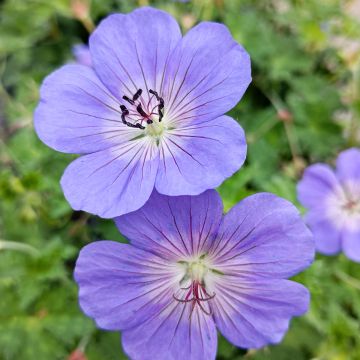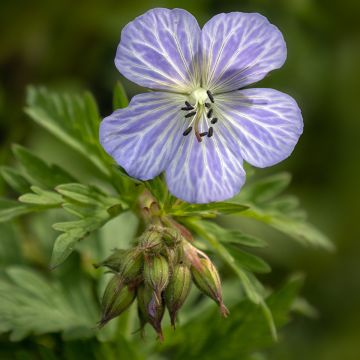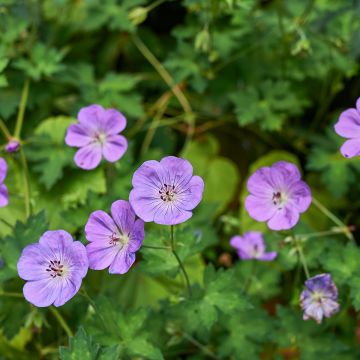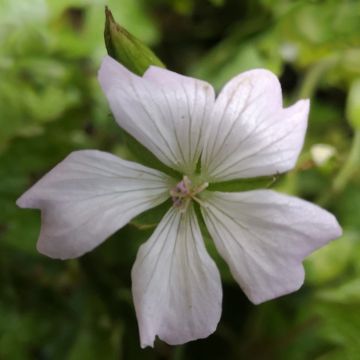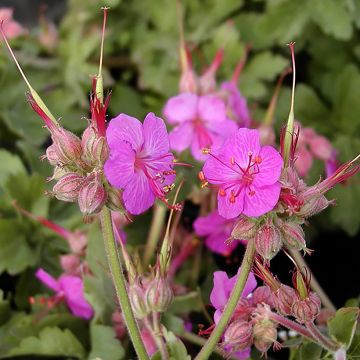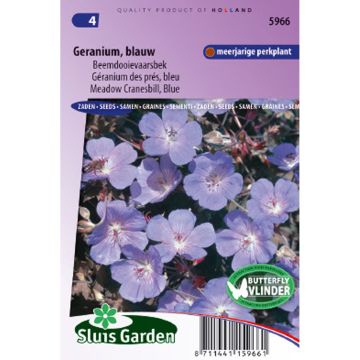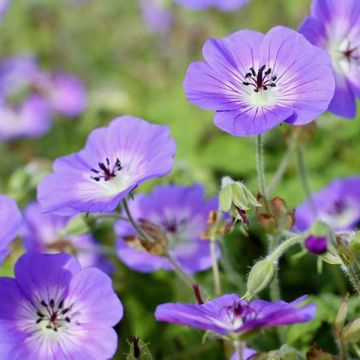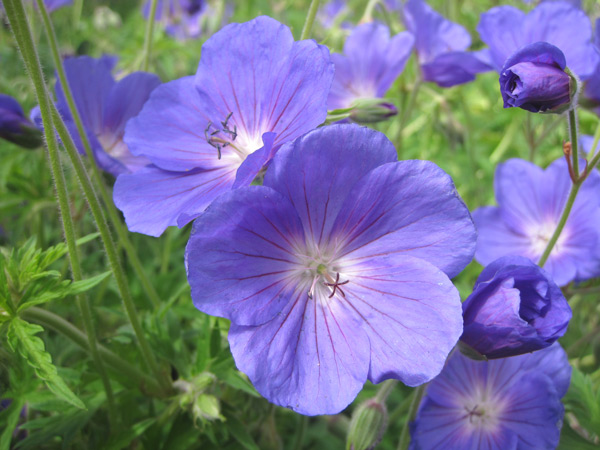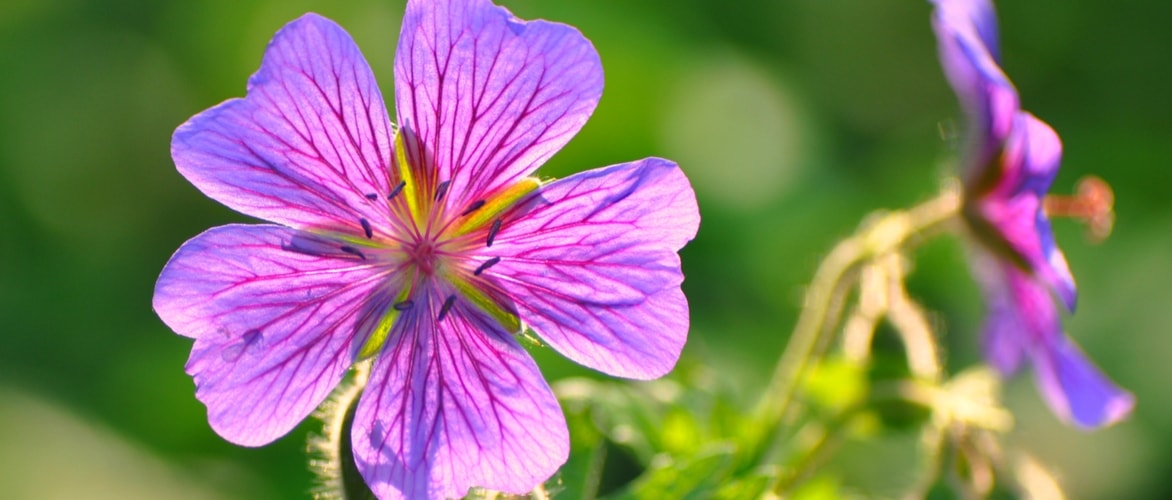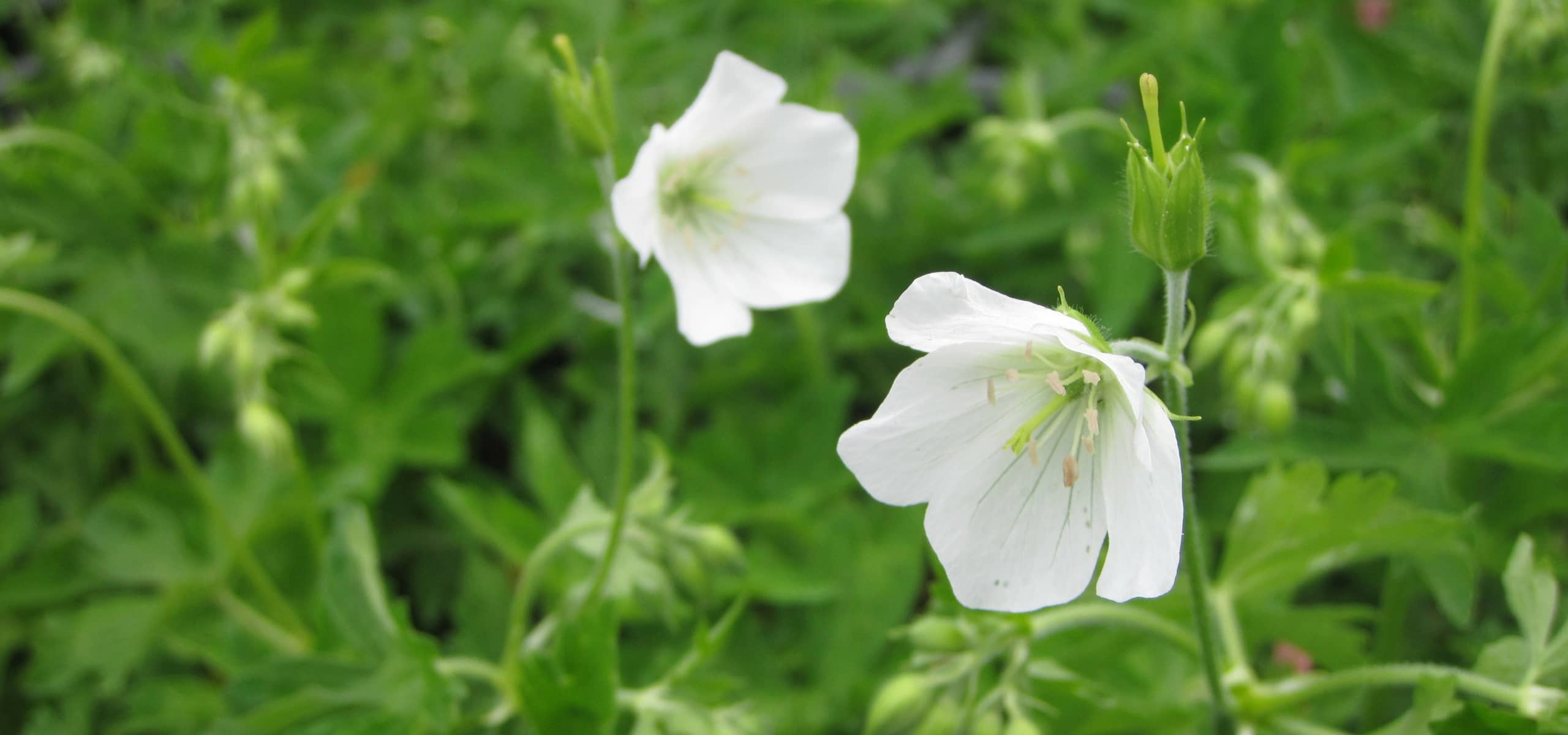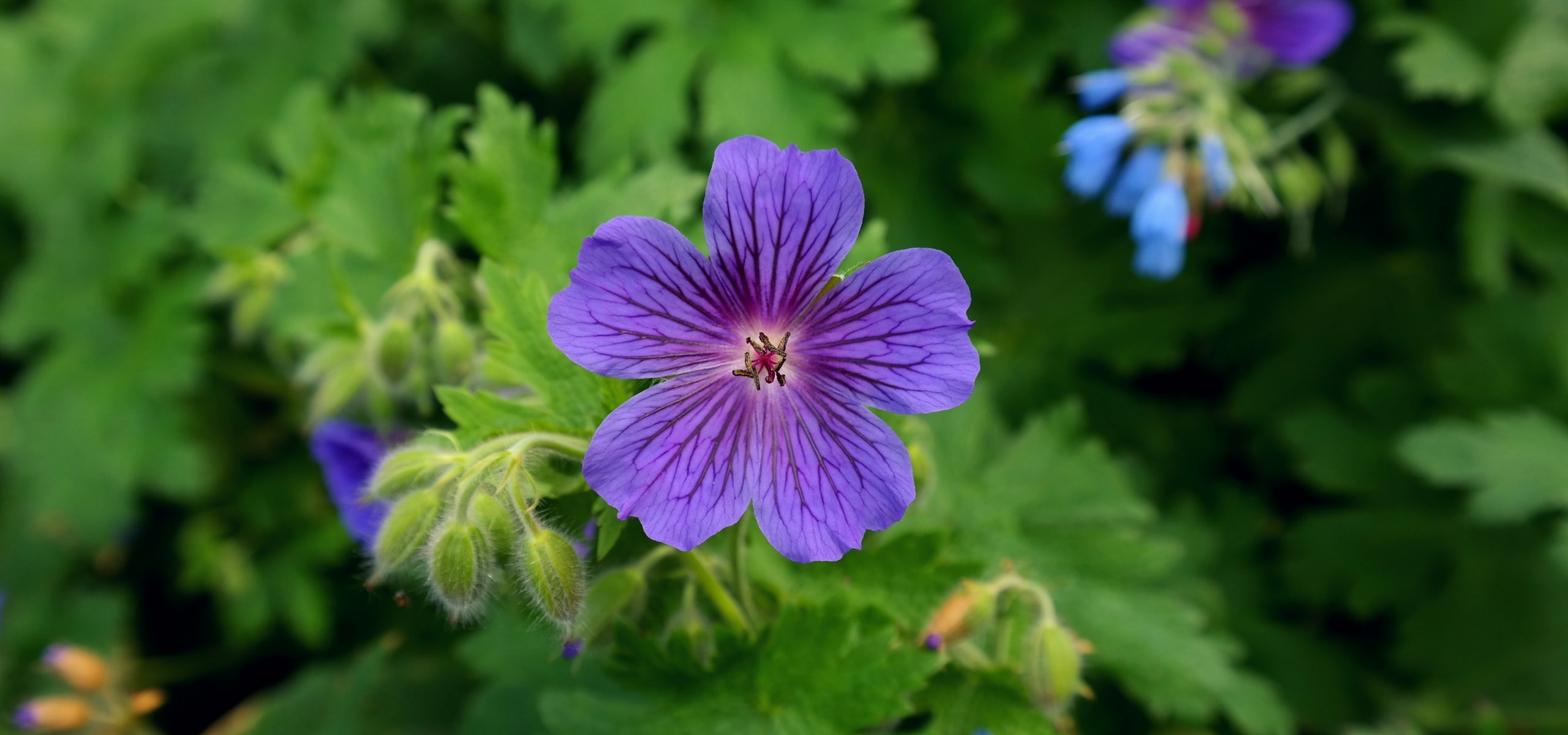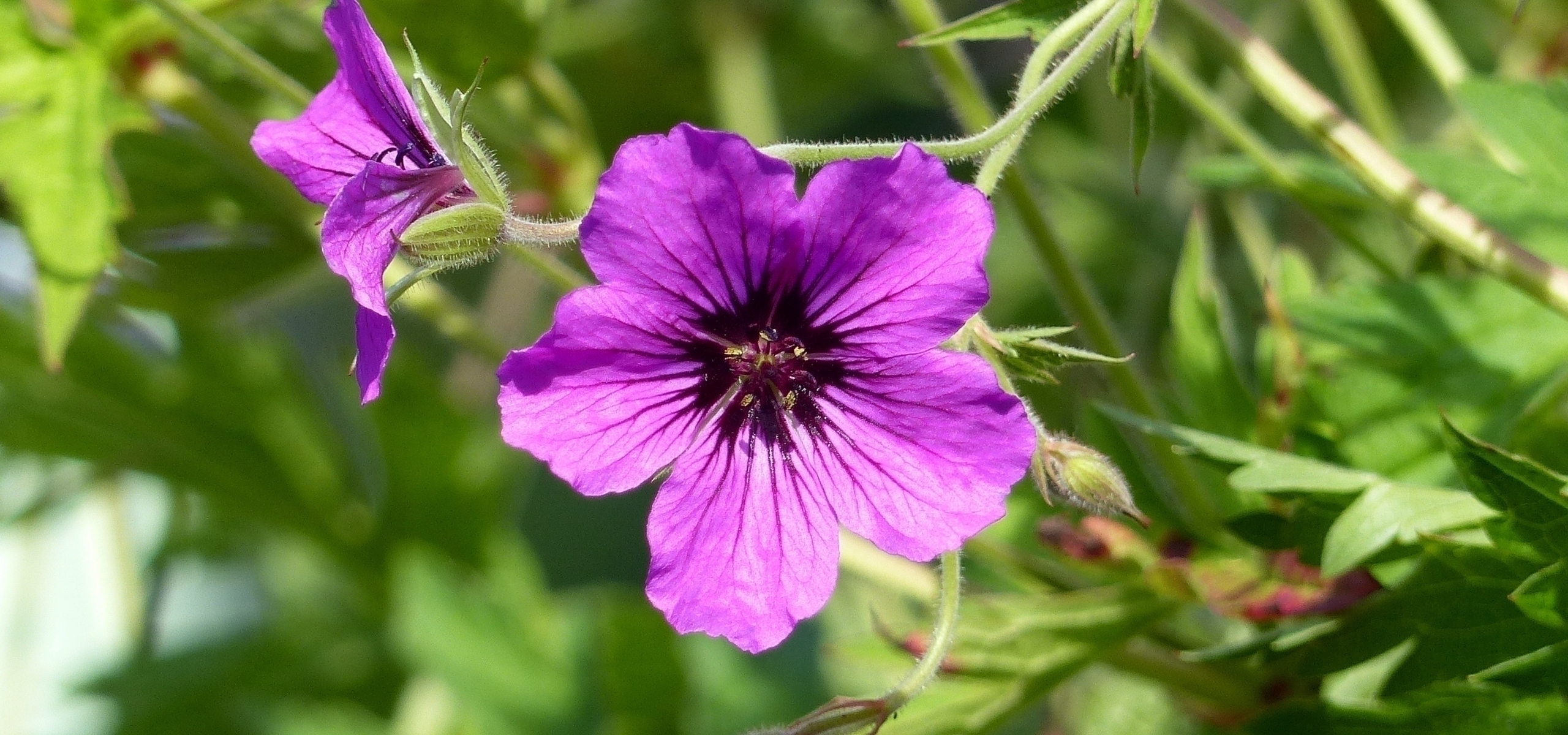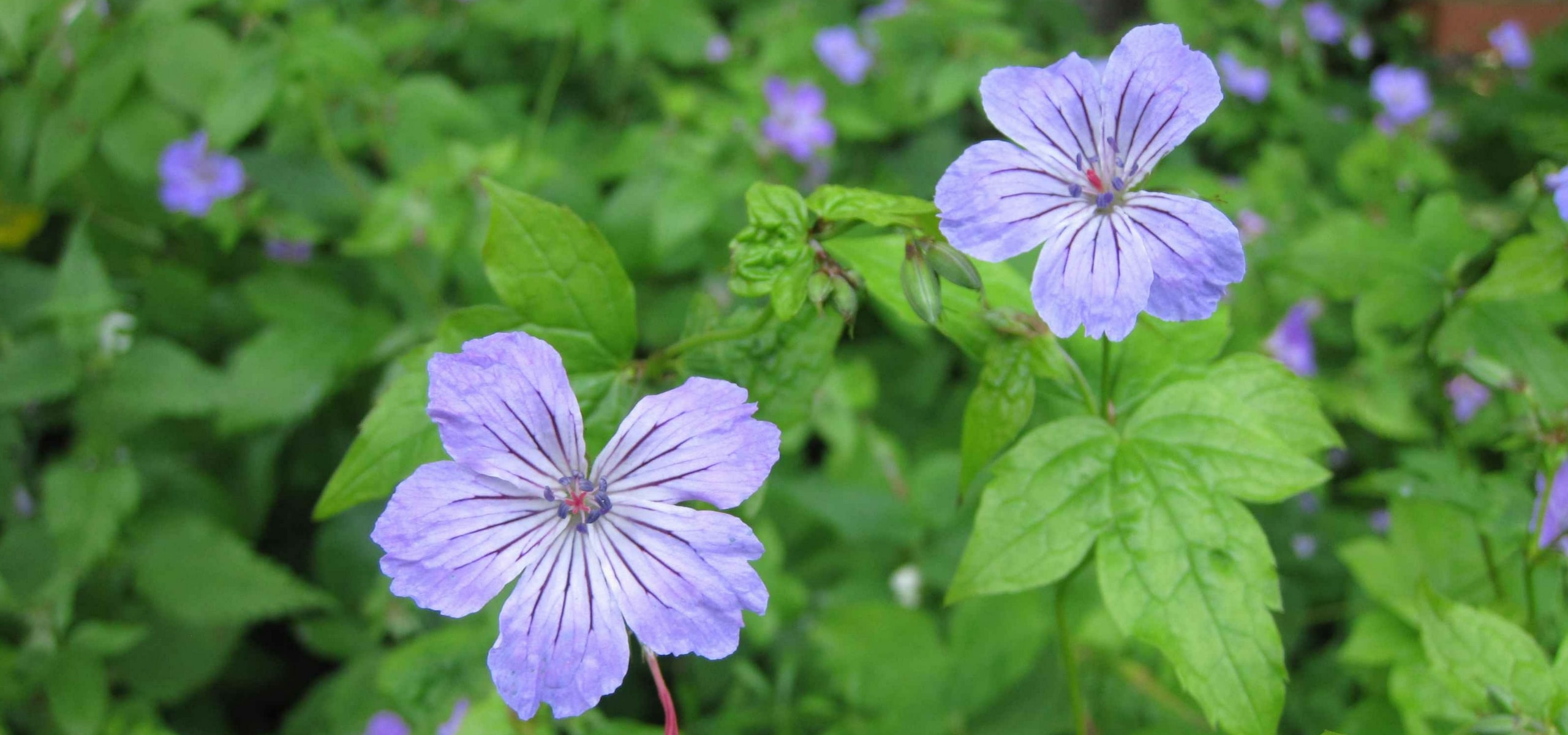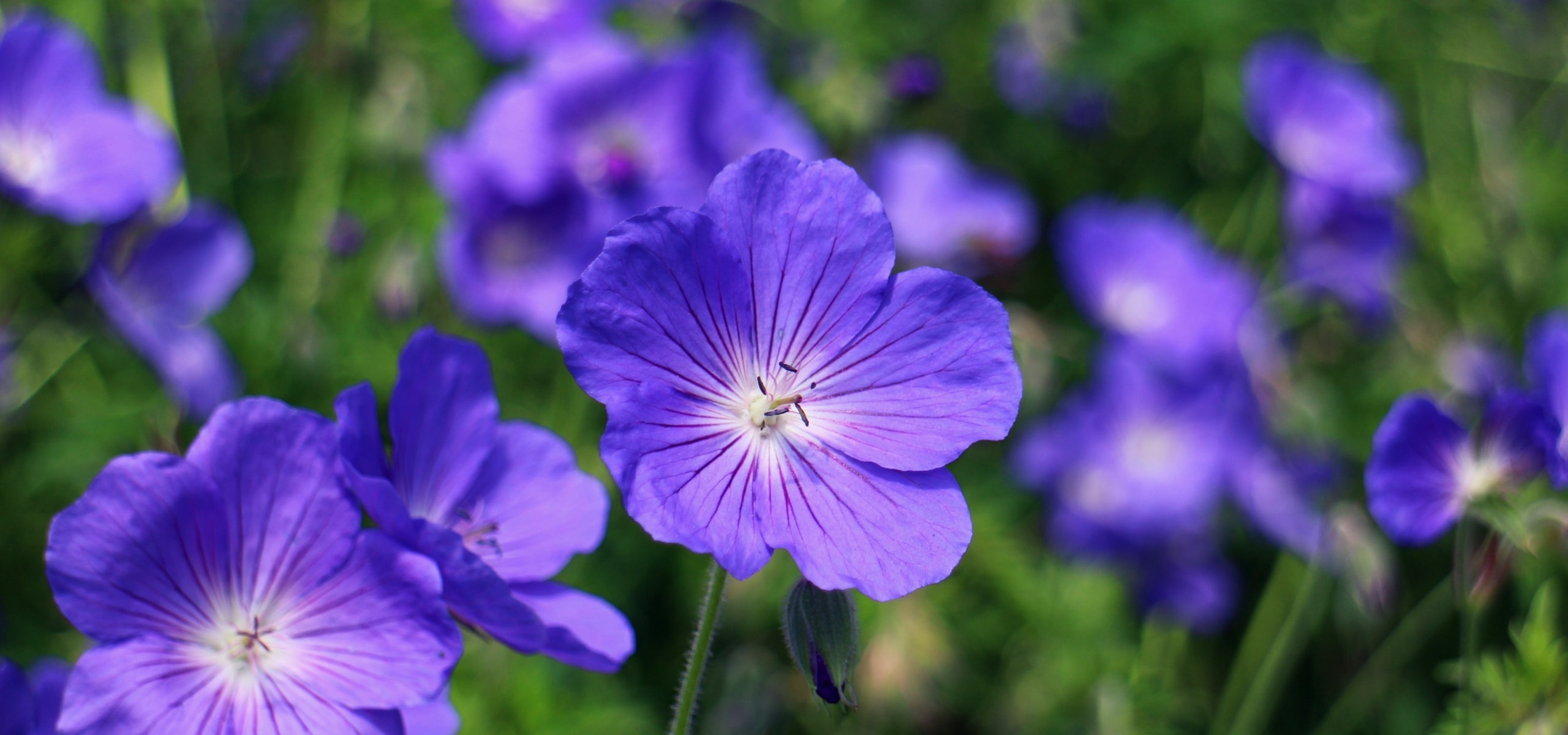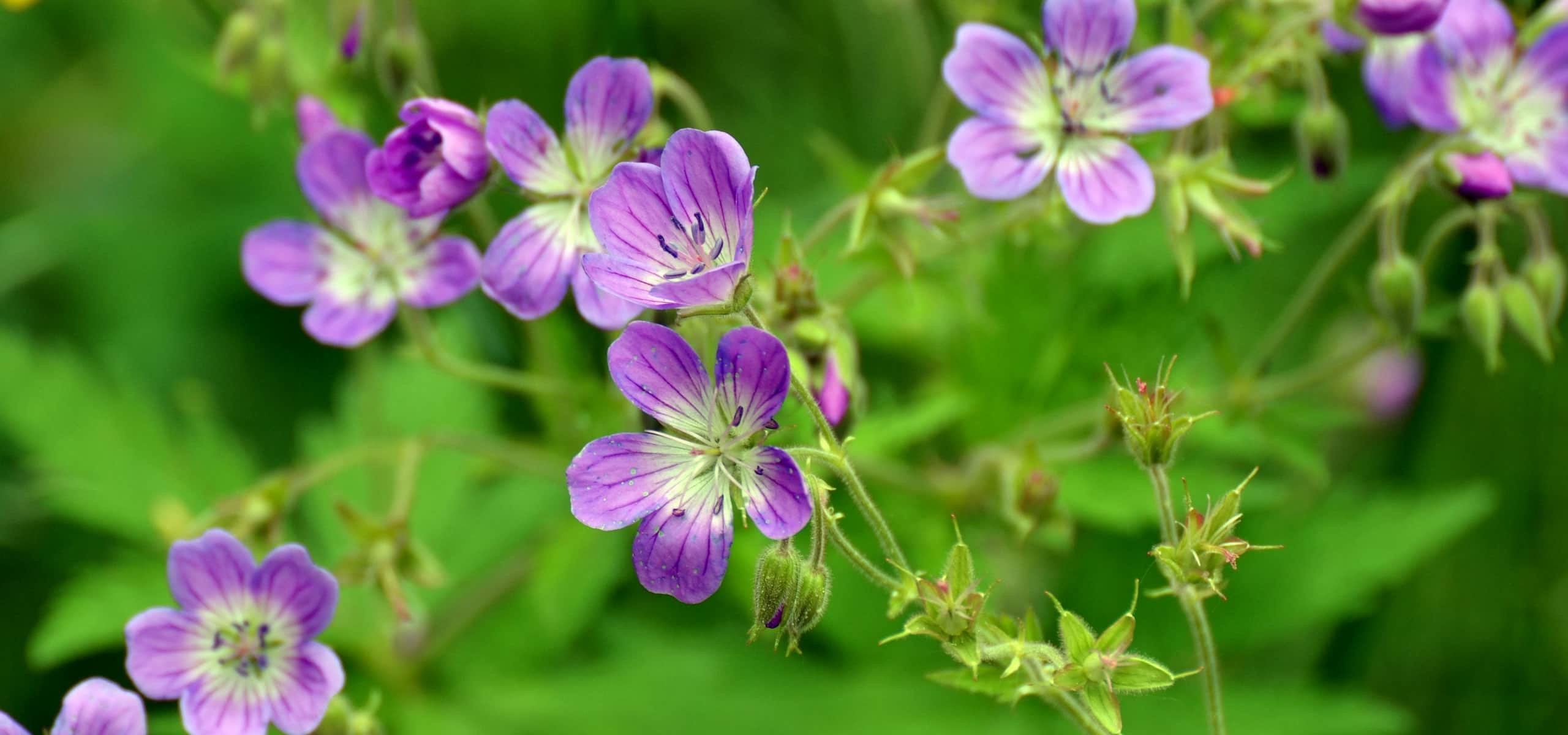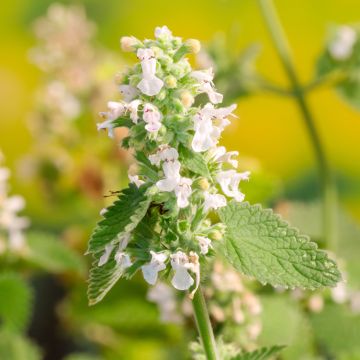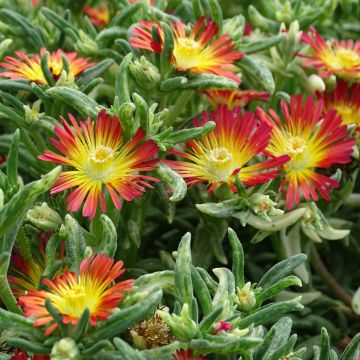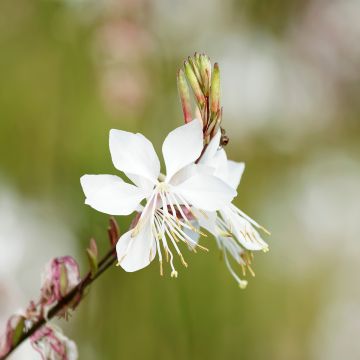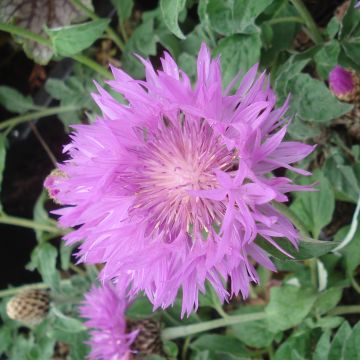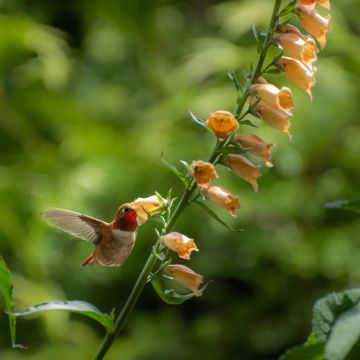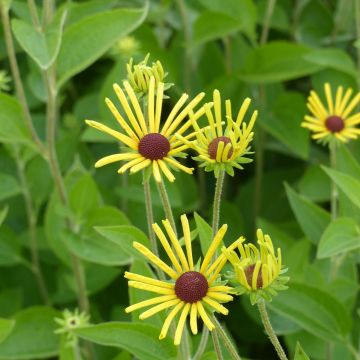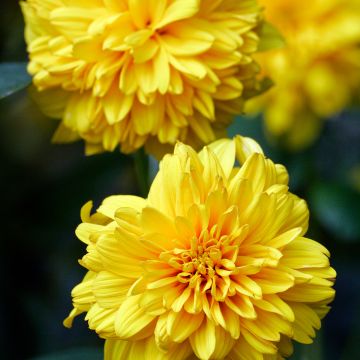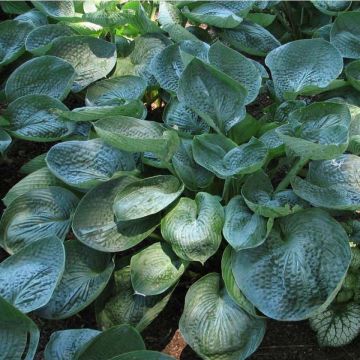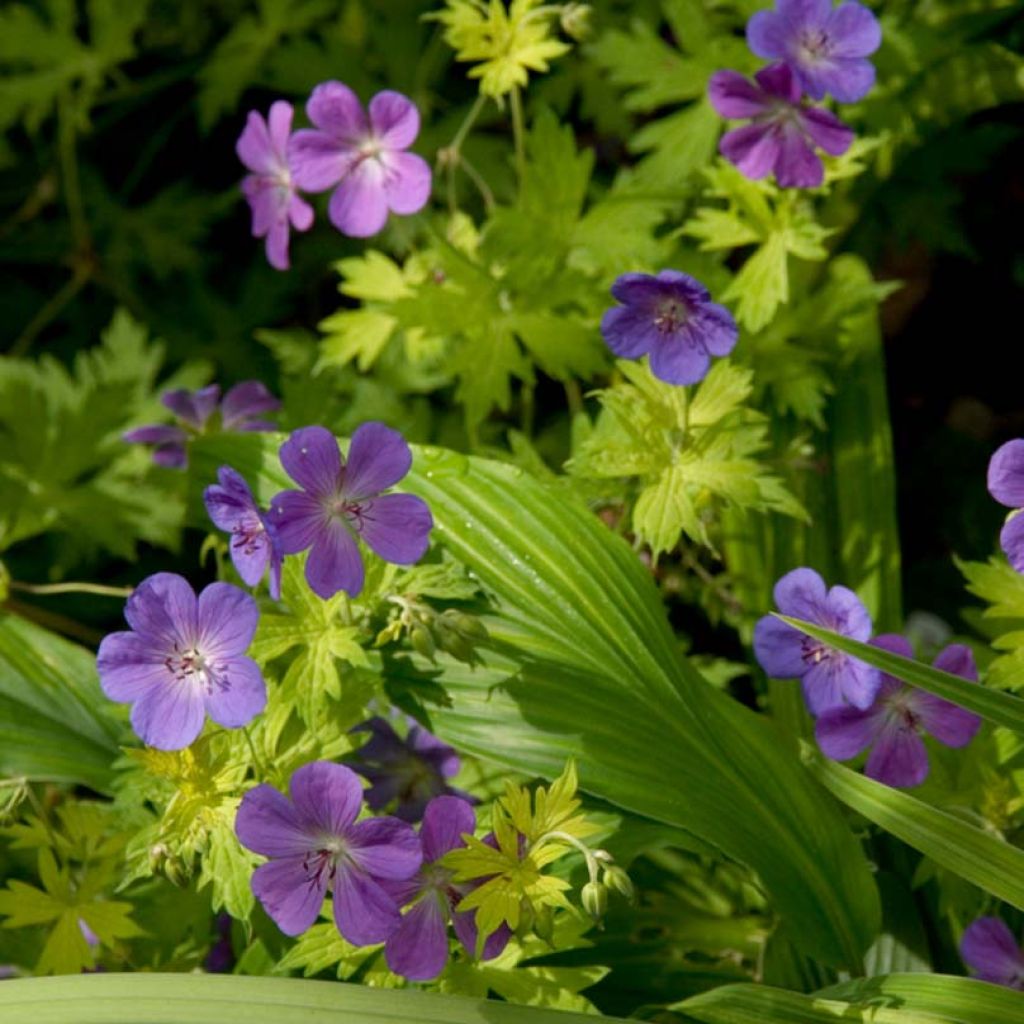

Geranium hybride Blue Sunrise
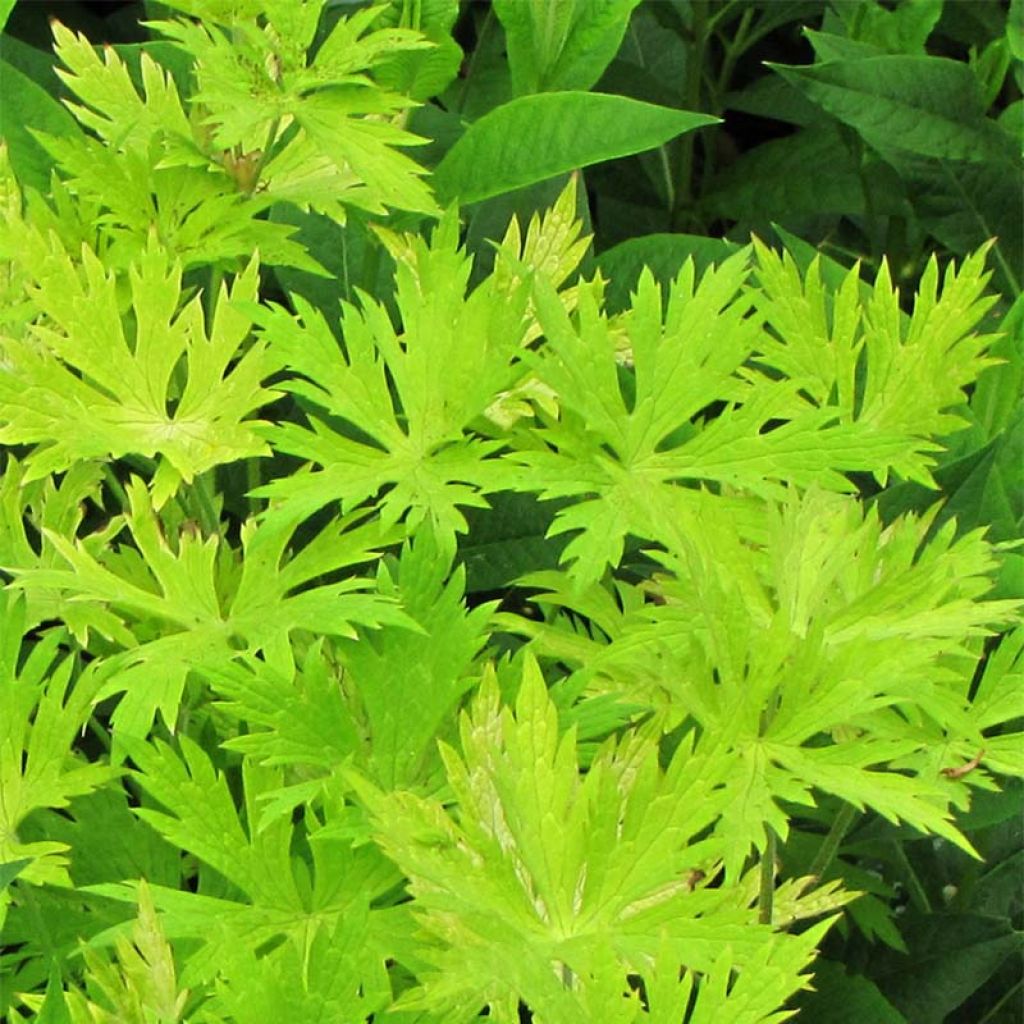

Geranium hybride Blue Sunrise
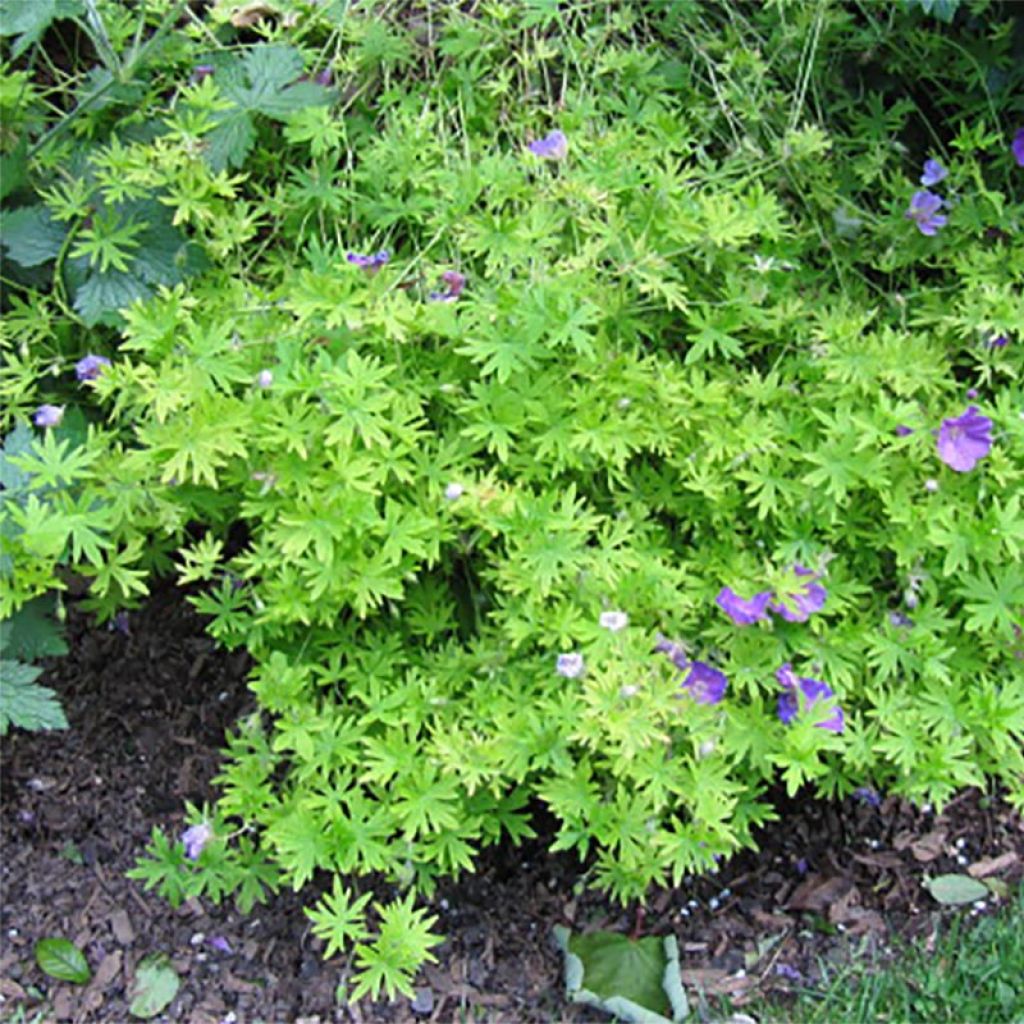

Geranium hybride Blue Sunrise
Geranium hybride Blue Sunrise
Geranium Blue Sunrise
Cranesbill, Storksbill, Hardy Geranium
Very small young plant but full of energy and seems to be happy where it's placed.
Nath44, 23/04/2025
Special offer!
Receive a €20 voucher for any order over €90 (excluding delivery costs, credit notes, and plastic-free options)!
1- Add your favorite plants to your cart.
2- Once you have reached €90, confirm your order (you can even choose the delivery date!).
3- As soon as your order is shipped, you will receive an email containing your voucher code, valid for 3 months (90 days).
Your voucher is unique and can only be used once, for any order with a minimum value of €20, excluding delivery costs.
Can be combined with other current offers, non-divisible and non-refundable.
Home or relay delivery (depending on size and destination)
Schedule delivery date,
and select date in basket
This plant carries a 12 months recovery warranty
More information
We guarantee the quality of our plants for a full growing cycle, and will replace at our expense any plant that fails to recover under normal climatic and planting conditions.

Does this plant fit my garden?
Set up your Plantfit profile →
Description
'Blue Sunrise' belongs to a new generation of perennial geraniums. It is an astonishing hybrid with late and prolonged flowering, just as remarkable for its highly cut golden foliage as for the delicate blue of its flowers that mature to purple. It continues to surprise with its modest size and compact semi-creeping habit, far from the overflowing opulence of its parents. For any soil that retains moisture, in full sun.
The perennial geranium 'Blue Sunrise' belongs to the Geraniaceae family. Its parentage is complex, giving no hint of the qualities of this plant. It is the result of cross-breeding between G.wallichianum 'Buxton Variety' x G. 'Ann Folkard' (G.procurens x G.psilostemon). 'Blue Sunrise' forms a semi-creeping clump, it does not produce long stems like its parents. It reaches a height of 40 cm (16in) and spreads 60 cm (24in) on the ground. The foliage is deciduous. The young leaves emerge late in spring, dressed in a bright yellow, edged with orange. They gradually turn green until mid-summer, with the autumn growth again becoming golden. The leaves are wide, highly cut, carried on red petioles, with a beautiful golden yellow in the centre, becoming tender green towards the edge of the lamina. The late flowering occurs from July to October. The flowers, in harmony with the foliage, are a delicate and vibrant blue, without a white centre, turning purple as they age. This hybrid is mainly reproduced in vitro, as its multiplication is delicate.
'Blue Sunrise' is a magician of colours and a worshipper of the sun that it captures in its foliage. It can be paired with other golden foliage and blue-flowering plants, such as Veronica prostrata 'Aztec Gold'. It will decorate the base of the golden hop, or provide shade for that of clematis 'Arabella', whose very blue flowers will complement the softness of the scene.
Geranium hybride Blue Sunrise in pictures
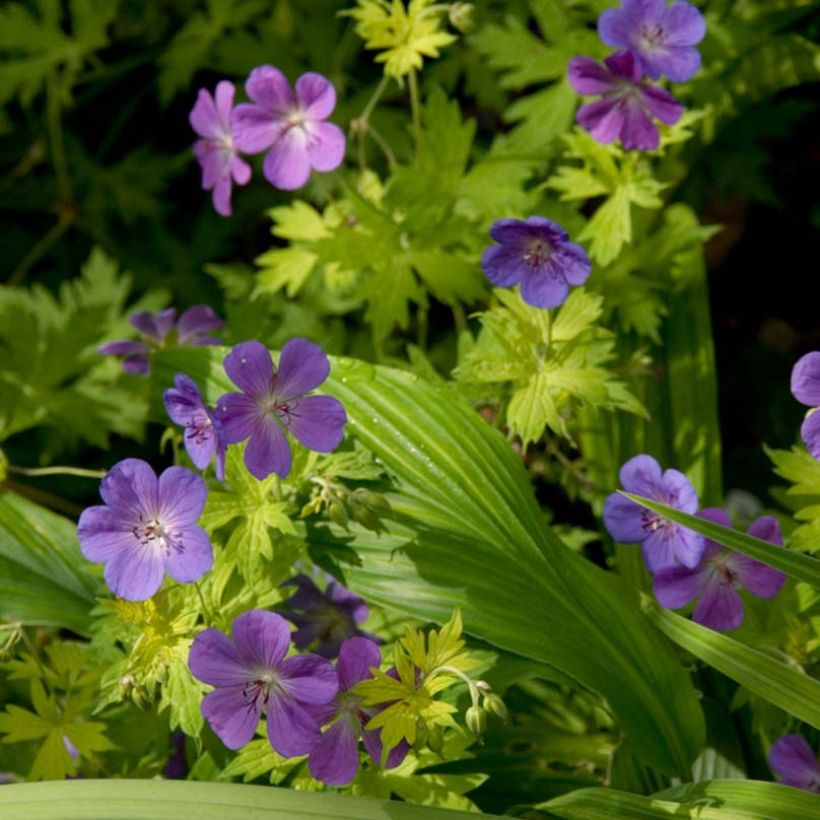

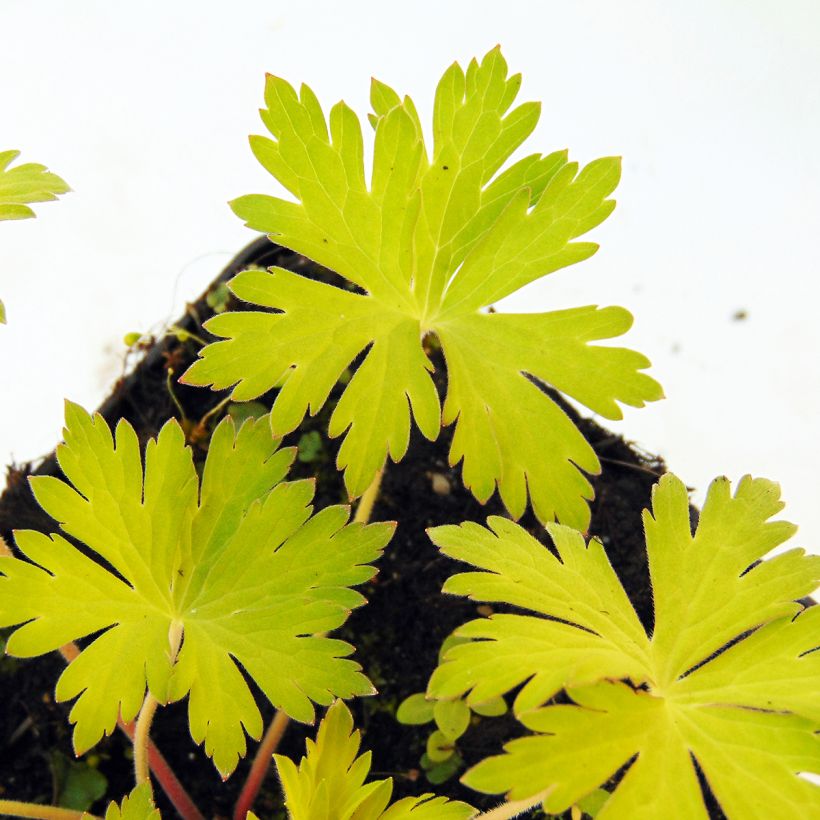

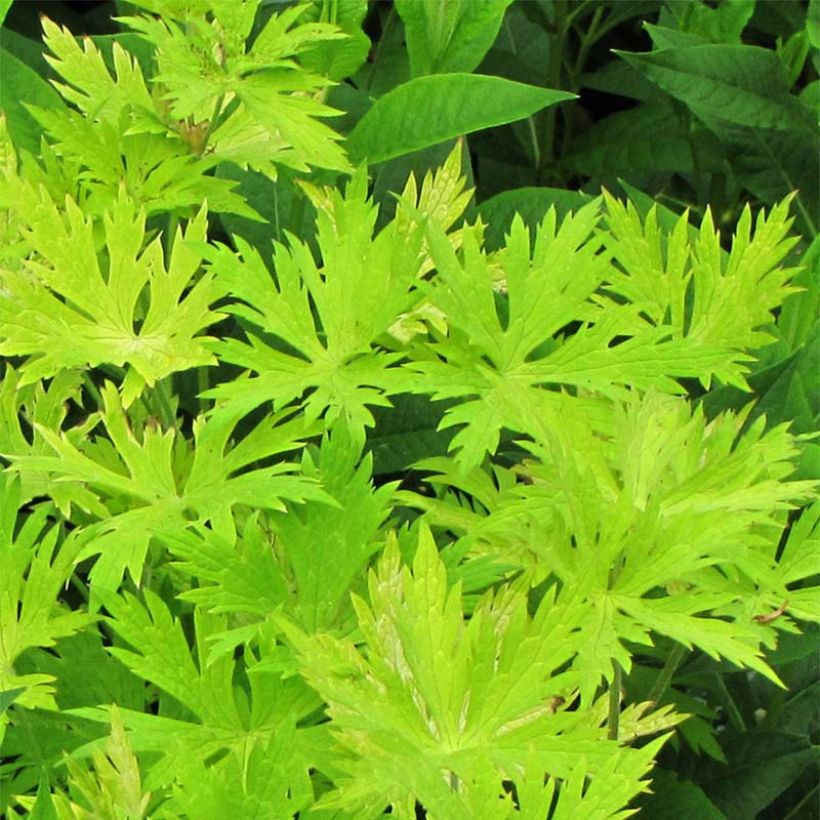

Flowering
Foliage
Plant habit
Botanical data
Geranium
Blue Sunrise
Geraniaceae
Cranesbill, Storksbill, Hardy Geranium
Cultivar or hybrid
Other Hardy Geranium - Cranesbill
View all →Planting and care
The perennial geranium 'Blue Sunrise' grows in full sun or partial shade. In an overly shady location it weakens, its foliage loses its intense golden colour, and it is less floriferous. It prefers a cool, moist, rich and fertile soil in summer, and is not bothered by winter moisture. It adapts well to ordinary soil, slightly acidic, neutral, or alkaline.
Planting period
Intended location
Care
Planting & care advice
-
, onOrder confirmed
Reply from on Promesse de fleurs
Similar products
Haven't found what you were looking for?
Hardiness is the lowest winter temperature a plant can endure without suffering serious damage or even dying. However, hardiness is affected by location (a sheltered area, such as a patio), protection (winter cover) and soil type (hardiness is improved by well-drained soil).

Photo Sharing Terms & Conditions
In order to encourage gardeners to interact and share their experiences, Promesse de fleurs offers various media enabling content to be uploaded onto its Site - in particular via the ‘Photo sharing’ module.
The User agrees to refrain from:
- Posting any content that is illegal, prejudicial, insulting, racist, inciteful to hatred, revisionist, contrary to public decency, that infringes on privacy or on the privacy rights of third parties, in particular the publicity rights of persons and goods, intellectual property rights, or the right to privacy.
- Submitting content on behalf of a third party;
- Impersonate the identity of a third party and/or publish any personal information about a third party;
In general, the User undertakes to refrain from any unethical behaviour.
All Content (in particular text, comments, files, images, photos, videos, creative works, etc.), which may be subject to property or intellectual property rights, image or other private rights, shall remain the property of the User, subject to the limited rights granted by the terms of the licence granted by Promesse de fleurs as stated below. Users are at liberty to publish or not to publish such Content on the Site, notably via the ‘Photo Sharing’ facility, and accept that this Content shall be made public and freely accessible, notably on the Internet.
Users further acknowledge, undertake to have ,and guarantee that they hold all necessary rights and permissions to publish such material on the Site, in particular with regard to the legislation in force pertaining to any privacy, property, intellectual property, image, or contractual rights, or rights of any other nature. By publishing such Content on the Site, Users acknowledge accepting full liability as publishers of the Content within the meaning of the law, and grant Promesse de fleurs, free of charge, an inclusive, worldwide licence for the said Content for the entire duration of its publication, including all reproduction, representation, up/downloading, displaying, performing, transmission, and storage rights.
Users also grant permission for their name to be linked to the Content and accept that this link may not always be made available.
By engaging in posting material, Users consent to their Content becoming automatically accessible on the Internet, in particular on other sites and/or blogs and/or web pages of the Promesse de fleurs site, including in particular social pages and the Promesse de fleurs catalogue.
Users may secure the removal of entrusted content free of charge by issuing a simple request via our contact form.
The flowering period indicated on our website applies to countries and regions located in USDA zone 8 (France, the United Kingdom, Ireland, the Netherlands, etc.)
It will vary according to where you live:
- In zones 9 to 10 (Italy, Spain, Greece, etc.), flowering will occur about 2 to 4 weeks earlier.
- In zones 6 to 7 (Germany, Poland, Slovenia, and lower mountainous regions), flowering will be delayed by 2 to 3 weeks.
- In zone 5 (Central Europe, Scandinavia), blooming will be delayed by 3 to 5 weeks.
In temperate climates, pruning of spring-flowering shrubs (forsythia, spireas, etc.) should be done just after flowering.
Pruning of summer-flowering shrubs (Indian Lilac, Perovskia, etc.) can be done in winter or spring.
In cold regions as well as with frost-sensitive plants, avoid pruning too early when severe frosts may still occur.
The planting period indicated on our website applies to countries and regions located in USDA zone 8 (France, United Kingdom, Ireland, Netherlands).
It will vary according to where you live:
- In Mediterranean zones (Marseille, Madrid, Milan, etc.), autumn and winter are the best planting periods.
- In continental zones (Strasbourg, Munich, Vienna, etc.), delay planting by 2 to 3 weeks in spring and bring it forward by 2 to 4 weeks in autumn.
- In mountainous regions (the Alps, Pyrenees, Carpathians, etc.), it is best to plant in late spring (May-June) or late summer (August-September).
The harvesting period indicated on our website applies to countries and regions in USDA zone 8 (France, England, Ireland, the Netherlands).
In colder areas (Scandinavia, Poland, Austria...) fruit and vegetable harvests are likely to be delayed by 3-4 weeks.
In warmer areas (Italy, Spain, Greece, etc.), harvesting will probably take place earlier, depending on weather conditions.
The sowing periods indicated on our website apply to countries and regions within USDA Zone 8 (France, UK, Ireland, Netherlands).
In colder areas (Scandinavia, Poland, Austria...), delay any outdoor sowing by 3-4 weeks, or sow under glass.
In warmer climes (Italy, Spain, Greece, etc.), bring outdoor sowing forward by a few weeks.






























